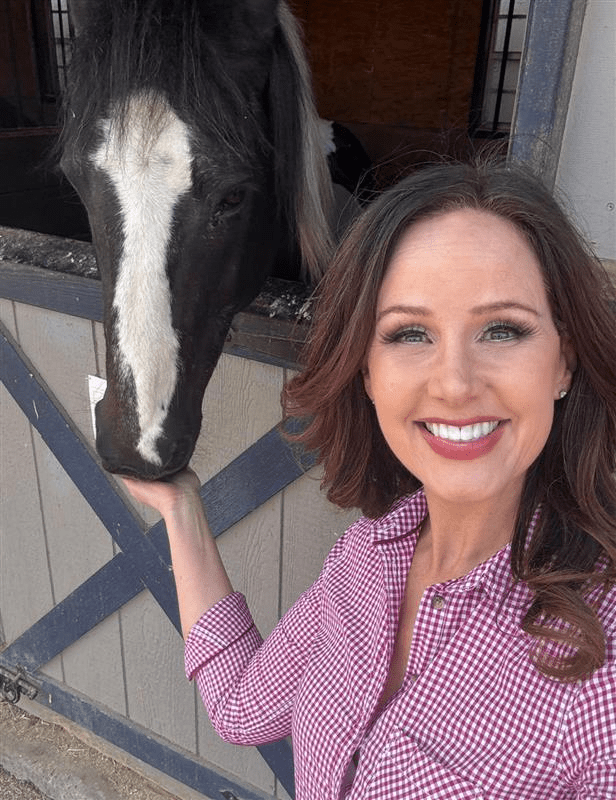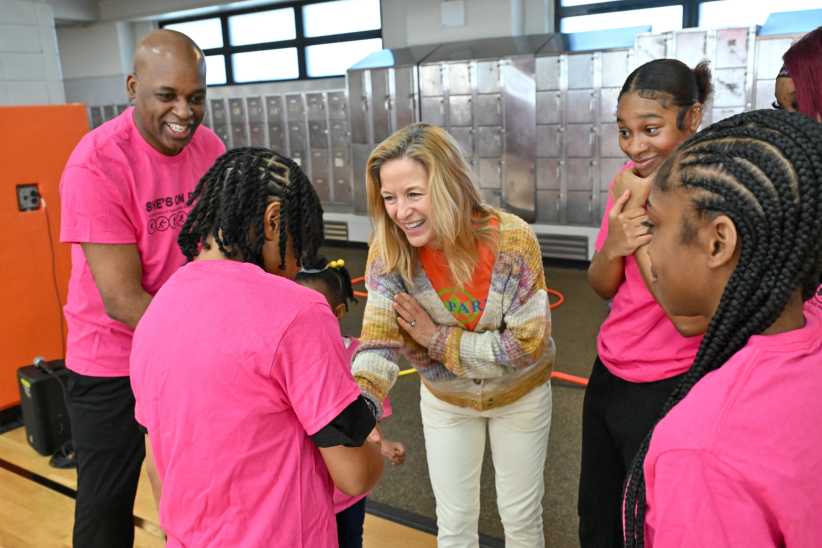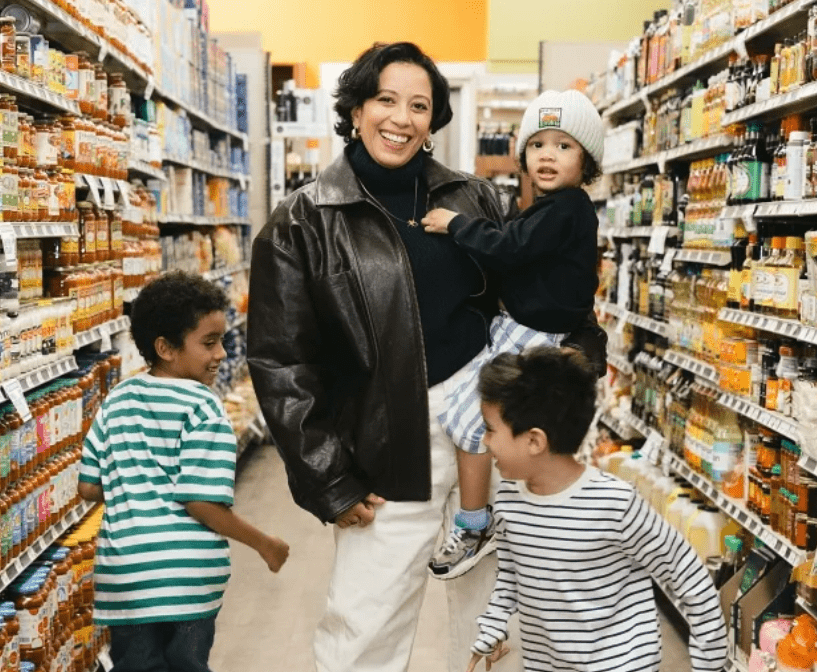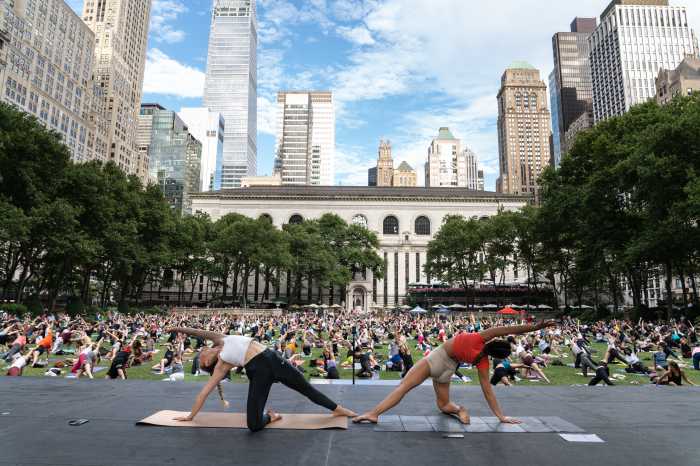On a rainy
Friday afternoon in August, the Harlem home of acclaimed actress Marcia Gay
Harden and her husband Thaddaeus Scheel is pleasantly chaotic. Harden’s twin
3-year-olds, Julitta and Hudson, demonstrate their somersaults and jumping
skills with relish while Harden finishes some movie-related business in her
office upstairs. As soon as she appears, the duo takes a break from tumbling to
attack mom with hugs and kisses, and big sister Eulala (almost 9)—an actress in
her own right— decides to go over her school supply list from the comfortable
perch of Harden’s lap. All this while two others in the family entourage,
Harden’s personal assistant and the twins’ nanny, navigate several waves of
phone calls, e-mails, coloring book requests and dinner preparation. Alhough
Harden clearly enjoys being at the center of the affectionate fray, she’s soon
off to her peaceful office, where she can better reflect on what she has
created in life and on the screen. And she doesn’t once mention the Oscar for
“Pollack” that is perched unostentatiously on a side shelf.
They’re all naturally
theatrical and like performing. We’ve always had fun doing made-up plays and
talent shows in our home upstate, and we also like going to shows like the
kids’ version of “The Nutcracker.” Last December they were performing the
Nutcracker suite as the mouse, Clara and the Nutcracker prince all the time.
They really put themselves into it. It’s a natural function for children to
identify with things they see.
How did you react when you knew you were about to have twins?
I was absolutely thrilled.
We had been working on having children, so it wasn’t a surprise. I wanted more
children for the family, more for Eulala, and then to have both sexes was such
a blessing.
And how is having had two at once turning out?
It’s exhausting. It’s
joyful. There’s a lesson a day, but definitely the hands are full. I’m working
quite a bit, so it’s a juggling act with two children who need you in the same
or very similar ways at the same stages, but who also are very different
people. They both dearly miss one-on-one time with mom. When each is alone,
their behavior transforms.
wiser sister. What are some of the pleasures and difficulties of raising a
9-year old?
The joys
are many: Eulala and I have a very close mother-daughter relationship. She’s
very verbal, very reasonable. She’s creative and has a real sense of play.
Upstate, we have a tree house. She picked out colors to paint the inside, and
she likes to play there wearing an old-fashioned dress. She really wants it to
feel colonial. She has a grasp of what that is and allows for the simplicity of
it. With a 9-year-old, one of the greatest challenges for the parent is to
allow the child to become who she is, not who TV and commercials want her to
be. We really have to monitor that—these media absolutely tell her this is who
to be, this is how to dress.
Their levels of ability and
activities naturally are different than hers. But there are things they all do
together—they have easels, for example, and if Eulala is on hers, the twins
will be on theirs. The noise level is different; sometimes they’re all quite
loud. But sometimes the twins get louder—they’re competing for attention—and
then Eulala is competing too. The noise level gets to me. Eulala is very
empathetic. When the babies cry, she doesn’t like seeing how it can put me on
edge. I find that very sweet.
Girl Adventure.” What’s it like being in films together?
I’d taken Eulala to see
the “Samantha” movie, and I said, “That was brilliant; I want Eulala to do one;
I want to do one.” The producer called and said, “Are you serious?” The role
was just little enough that she could do it. And it was set in the colonial era
so she learned a huge amount. She was totally comfortable on camera, she loved
it, and she also has a wicked comic sense. Casting directors know about her,
and she has turned down a Disney movie. The whole family discussed it and
agreed that was the best choice.
I’m not pushing her to be
an actress. I want her to be a healthy, smart, studious person. There are so
few role models among young actresses who have weathered that crazy age in your
late teens. During that time, you’re going to be experimenting anyway, but to
do it in the public eye, and with money…I cannot imagine wanting her to go
through that. I look at other examples of girls going through tawdry public
awakenings and I wonder, Where are their parents?
I enjoyed being in
California, but I feel more alive in New York. I love the culture here. I love
the diversity in New York. The races and classes, all mixed up. Eulala yearns
to go back to California for the beach, the warmth. But I think it’s a tough
place for a girl to grow up. There’s an emphasis on beauty, because it’s the
film and television world, and the emphasis on “making it” or “being famous,”
and that translates into an emphasis on having the right purse at $1,000. While
she’s certainly exposed to some of that with me being an actor, as a parent
your value system has to be shared at an early age, and I felt I had a better
ability to share it and be truer to myself living here.
I feel like there’s so
much access to theater, museums. People go to museums as a playdate! They hook
up at these really great cultural places in the city: the Children’s Museum of
Manhattan, The American Museum of Natural History, the Met. You feel the
pace—it’s a caffeine espresso energy. You’re racing, meeting appointments,
scheduling people who help you with your kids. I like that engagement with the
city. I like walking on the street, and I like taking the subway. It’s why we
live here and what we love, but it can also be stressful. So we added the house
upstate to that—the Catskills are very raw and unrefined, and we have our
property without any people around.
key?
We do a
lot of domestic things, like picking blueberries, having a garden, making
zucchini bread, and then hikes and swimming. And the nice thing is that the
kids perceive all those things as fun. If I’m going out to the blackberries and
raspberries, they know they have to put on the long sleeves. I love that
because they’re learning about domestic activity, and they’re doing things that
involve their hands, things that are not all about being in front of a computer
or television. In the city, those things come more into play. Plus, there’s the
challenge of getting kids to one class and then to another. In the morning,
Thad and I do everything, then we go off to meetings, and we take over again at
bedtime and bath time. I join the kids whenever I can.
you have for working moms who are still figuring out the juggling act?
The first thing I would
say is to get help. That is the only way that I could do what I do. I have a
terrific, terrific nanny. She doesn’t live with us; I want to be a mom. But you
have to be willing to be exhausted, willing to be tired. My husband is also
hands-on, and each spouse has to define his or her own help needs. You can’t
just say, “The woman does this, the man does that.”
that come about?
We
looked at a lot of these places. We could afford the size of this place, as
opposed to the same size south of 96th Street, and we thought we’d be
comfortable. It was a neighborhood in transition. We had two concerns: the
first was that the neighborhood suffered from the crack epidemic in the 1980s,
so there were and are vestiges of that dissipation. Point two was that we
wanted to be sure that we wouldn’t be a part of turning the area into a place
with an all-white Baby Gap on every corner.
good? Or do you still worry about it?
When we first looked here, we saw that the services were not great,
that this part of the city had been shunned. It’s nice that it is more diverse
economically and racially now. There’s more of a flow. The key is that it
maintains the cultural heritage of Harlem. I think the people who are here are
glad to see the drugs go, to see the burned-out buildings go, to see 125th
street thriving. There’s a goodness here, and it’s more than just Columbia
housing coming in. Plus, we love the home, we love the brownstone; it’s a wide
brownstone. Maya Angelou lives down the street, we’ve met so many nice
neighbors, and we have a real good feeling about living here.
I work with a lot of
different charities, but Hale House is an especially interesting one because
it’s in the neighborhood. They were a great cause, they lost footing a few
years ago, and they’ve been re-founded. They offer fantastic services for
children, like preschool and sanctioned foster care, and they help people
working through drug issues. With Hale House around, parents don’t lose their
kids forever; the kids don’t just get sent off and given over to the government
to handle. So it’s an interesting and worthy cause.
Eulala went with me to the
Ronald McDonald House for kids with cancer. Some of the girls were going into
surgery, and we brought caps for them, and we brought the Felicity movie and
signed it. It really pops that bubble of “hanging out with the unfortunate,”
and I do say that dripping with quotation marks, because those girls were not
to be pitied, even though the condition is to be pitied. The girls we met were
heroes, so strong, so incredible and so full of life, handling fear with aplomb
and grace. So for Eulala it wasn’t, “There but for the grace of God go I.” It
was, “Oh my gosh, I want to be like these girls.”
start with “Into The Wild,” which is now being advertised on billboards. It’s a
Sean Penn-directed film based on the Jon Krakauer’s book of the same name
[about an interesting and promising young guy who ventures off into the Alaska
wilderness alone].
It’s so
poetic—a journey about people shunning corporate advertising and downsizing and
coming into a real contact and understanding of the human soul; the independent
spirit of being alone in nature, not in the city, not even in middle America.
It’s about being in the elements with only what you need to survive, and Sean
did a brilliant job directing it.
What else is on deck for this year and next?
“Canvas” is touring
festivals. I play a paranoid schizophrenic against the brilliant Joe
Pantoliano. It’s won like every audience award at the festivals. In “Rails and
Ties,” I play a woman who is dying of cancer. Kevin Bacon plays my husband, who
has been in a terrible accident. It’s dark and sad, but the director doesn’t
pepper you with music. And “A Christmas Cottage” is a Thomas Kinkade story. We
wanted to make sure it wasn’t sappy but was still idealistic. I had the most wonderful time doing it and spent
an extraordinary three days with Peter O’Toole. He had the curiosity and
delight of a boy on the set.
“The Mist” is like a “Lord
of the Flies” situation. I play a religious paranoid woman with apocalyptic
visions. As the bugs come in, she finds her power. It was a blast to do—trying
to do a minute human story in the midst of giant bugs!
how old your kids will be before you let them watch your films?
There’s no set date. I’ll
let them see films when it’s appropriate. Eulala’s seen maybe two. I let her
see “The Bad News Bears.” There was a lot of cursing, but it was okay, because
I happen to curse. Frankly, it’s not so much about her being scared at certain
movies. It’s more that she would be bored or wouldn’t get it. Half of raising a
kid is common sense. You can’t think, “What do other people do?” You have to
listen to your heart, listen to yourself.
Photography by Thaddeus Harden.
This interview was originally published in the September 2007 issue of New York Family.
House
with a Heart
you ask the staff at Hale House the key to its success, they’ll tell you it’s
love—of the work they do and the children they work with. “Our kids are
special. If you were to meet some of them, they are the most outgoing, happy,
well-adjusted children,” says Executive Director Randy McLaughlin.
A
Harlem institution since 1969, Hale House, is best known for providing housing
to children between the ages of birth and 5 years—many of whom have mothers who
are ill, incarcerated or addicted to drugs. But Hale House has also spawned two
new programs recently: a supportive transitional housing program that helps
families move from shelters to permanent homes; and the Mother Hale Learning
Center, which provides low-fee and free early childhood education.
Its
mission and impressive track record have attracted the support of many
luminaries, including Harlem resident Marcia Gay Harden. All of the kids in the
children’s residence, for example, are placed in a permanent home by the time
they’re 5—either back with their mother (the ideal scenario), a relative or an
adoptive family. The housing program finds homes for families within a year
(and in the meantime provides a temporary residence equipped with everything from
lace curtains to pots and pans). The education program is so successful it has
a waiting list of 150.
Hale
House prides itself on the one-on-one attention it provides. The children’s
residence houses 10 kids, the transitional housing facility holds 19 families,
and the child care center accommodates 38 students. “We didn’t want to be a
large institution,” McLaughlin says.
McLaughlin,
who joined Hale House in 2004, said Hale House is long past the controversy it
faced in 2001, when then-President Lorraine Hale was convicted of embezzling
funds from the organization. “I think we have grown from it and built a
stronger and better organization,” he says. Among other steps, the process
involved restructuring the organization from the top down, doing an internal
investigation, hiring outside auditors and making annual reports to the
attorney general.
The
biggest challenge Hale House faces today is fundraising, of course. Hale House
operates outside the traditional child welfare system (aside from the transitional
housing program) and is funded by individuals, corporations and foundations.
To
find out more about Hale House, call 212-663-0700 or visit www.halehouse.org.
—Leah
Black





















